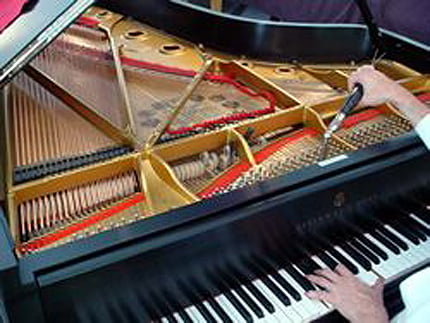Before I proceed with why it is exceedingly essential to obtain piano tuning, I want to establish
Tuning the Piano: The Rule of Thumb
As a piano dealer, one common advice that I offer all my customers is to tune their pianos at least twice a year. Once should be when you switch on the heat during winter, and the second time has to be when you switch it off during springtime. During these seasons, humidity alters significantly, which has a huge effect on your piano.
Nonetheless, humidity is not the only dynamic that influences your piano strings. Piano tuning may be compulsory less or more often than you would like to think. It all depends on several significant factors, which I point out below:
The Piano’s Age
This factor plays a substantial role when establishing how frequently your piano needs to be tuned by a professional. If you own an older instrument, odds are that you may need to tune it more frequently compared to a relatively new musical instrument. Even so, new pianos have to be tuned very often, mainly due to the piano strings. Typically, brand new pianos require additional tunings in their first year to balance the settling and stretching of the new piano strings.
Humidity and Temperature Levels
These two factors play a huge role when it comes to why piano tuning is necessitated. Humidity and temperature levels can influence all the piano strings and have an off-putting effect on the piano pitch. The frequent changes in the humidity level in and around your home can trigger the pianos’ wooden structures to shrink and swell. These issues can cause the piano to go out of tune completely.
The piano consists of materials such as felt and wood, and these materials are very sensitive and easily adjust according to the climatic conditions. Excessive changes from dry to wet or from hot to cold will cause the materials to swell and contract. When this happens, it can affect the action response, pitch, and tone of your piano.
It is highly recommended that you place your piano far enough from fireplaces, heating and/or 
The Frequency of Piano Usage
If you are a serious piano student or a professional pianist, piano tuning should be done at least 4 times a year, or perhaps more, depending on the number of times that you play every day, week and month. When you are at this level, it is best to get your instrument tuned whenever the piano’s tuning starts to bother you. However, if your piano is solely in your living room as part of your home décor and only played on the odd occasion, then it will only require tuning once a year.
I cannot stipulate this enough; it is best to leave piano tuning to professionals. Do not attempt to tune the piano on your own, because there is a great possibility that you could damage the instrument. The piano contains numerous little pieces and parts that create its deep, rich sound and there are various ways to ruin or break the instrument when you damage these parts. If your piano needs tuning, please hire a decidedly experienced piano technician to do it for you.
When was the last time you had your piano tuned by a professional?






